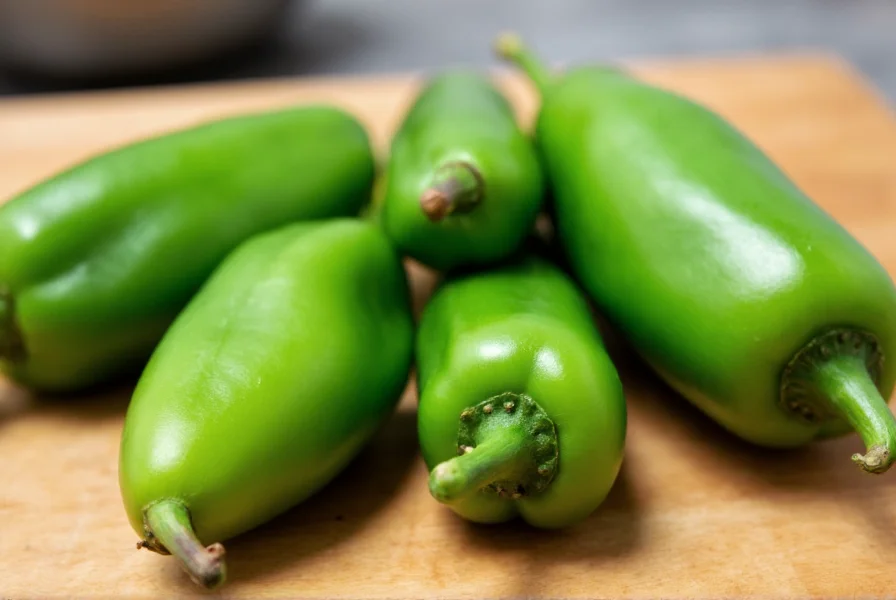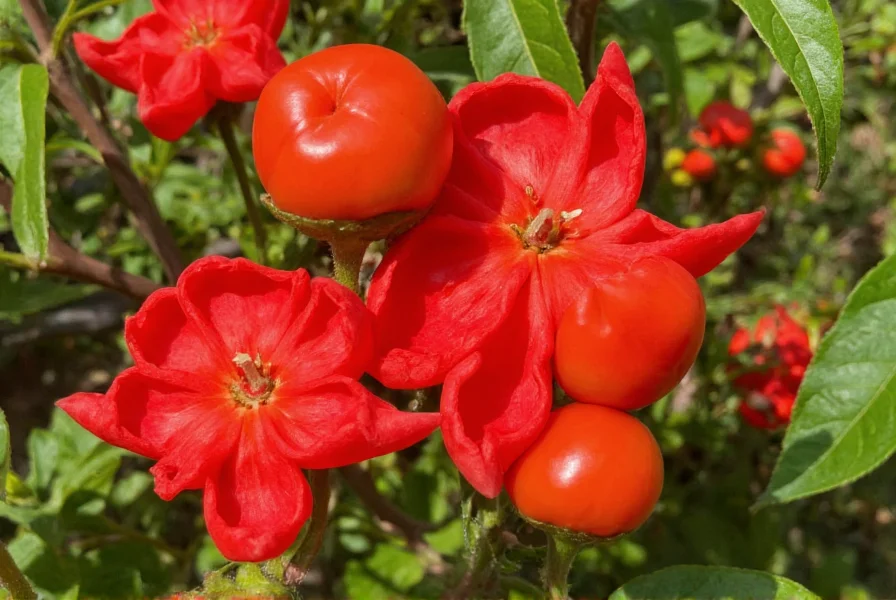If you've searched for ‘je pepper’, you're probably looking for information about jalapeño peppers. This common misspelling occurs when users omit the ‘la’ in ‘jalapeño’. Understanding this distinction is crucial for finding accurate information about this versatile chili pepper.

What Are Jalapeño Peppers?
Jalapeño peppers (Capsicum annuum) belong to the nightshade family and originate from the Mexican state of Veracruz. These cylindrical peppers typically grow 2–3.5 inches long and 0.8–1.4 inches wide. When immature, they appear bright green, gradually turning red, orange, or yellow as they ripen.
The name ‘jalapeño’ comes from ‘Jalapa’, the capital of Veracruz. Contrary to what ‘je pepper’ might suggest, there's no pepper variety officially called ‘je pepper’ in botanical classification systems. This misspelling frequently appears in search queries, creating confusion for those seeking authentic information.
Heat Level and Flavor Profile
Jalapeños occupy the middle range of the Scoville scale:
| Pepper Type | Scoville Heat Units | Heat Comparison |
|---|---|---|
| Jalapeño | 2,500–8,000 | Moderate heat with grassy notes |
| Serrano | 10,000–23,000 | 2–5x hotter than jalapeño |
| Habanero | 100,000–350,000 | 20–40x hotter than jalapeño |
The heat primarily concentrates in the white pith and seeds. Removing these parts significantly reduces spiciness while preserving flavor. Jalapeños offer a distinctive grassy, slightly smoky taste that makes them versatile for both fresh and cooked applications.
Nutritional Benefits of Jalapeños
These peppers deliver impressive nutritional value in minimal calories:
- Rich in vitamin C (providing 119% of daily value per 100g)
- Contains capsaicin, which may boost metabolism
- Good source of vitamin B6 and potassium
- Provides dietary fiber (2.8g per 100g)
- Contains antioxidants like carotene and lutein
Research suggests regular consumption of chili peppers like jalapeños correlates with potential health benefits including improved cardiovascular health and reduced inflammation. The capsaicin content may also support weight management efforts.
Culinary Applications
Chefs and home cooks utilize jalapeños in diverse preparations:
Fresh applications: Salsa verde, guacamole, salads, sandwiches, and as pizza toppings. The bright green color and crisp texture enhance both flavor and presentation.
Preserved forms: Pickled jalapeños maintain crunch while developing tangy complexity. Chipotles (smoked, dried jalapeños) offer deep, smoky flavor essential in adobo sauce.
Cooking tips: Always wash hands thoroughly after handling. Use gloves when processing large quantities. Remove seeds and membranes to reduce heat. Roast over open flame for smoky depth before incorporating into sauces or fillings.

Growing Jalapeños at Home
These peppers adapt well to container gardening and backyard plots:
- Start seeds indoors 8–10 weeks before last frost
- Transplant outdoors when soil reaches 60°F (15°C)
- Requires 6–8 hours of direct sunlight daily
- Harvest when peppers reach 2–3 inches and develop sheen
- Water consistently but avoid soggy soil
Container gardeners should use pots at least 12 inches deep with drainage holes. Jalapeño plants typically produce harvest within 70–80 days after transplanting. The plants continue producing until frost kills them.
Common Misconceptions About ‘Je Pepper’
Several myths persist around this misspelled term:
- Myth: ‘Je pepper’ is a distinct pepper variety
- Fact: No recognized pepper variety uses this name; it's consistently a misspelling of jalapeño
- Myth: Je peppers are hotter than regular jalapeños
- Fact: Heat levels depend on growing conditions, not spelling variations
- Myth: Grocery stores sell ‘je peppers’ under that name
- Fact: All commercial listings use ‘jalapeño’ spelling
Storage and Handling Best Practices
Proper storage extends freshness and safety:
- Refrigerate unwashed peppers in crisper drawer for 1–3 weeks
- Freeze whole or sliced peppers for 6–8 months
- Wear gloves when handling to prevent skin irritation
- Avoid touching face or eyes during preparation
- Wash cutting boards and utensils thoroughly after use
If you experience skin irritation from capsaicin, apply milk or yogurt to affected areas. The casein protein helps neutralize the burning sensation more effectively than water.
Frequently Asked Questions
Is ‘je pepper’ a real pepper variety?
No, ‘je pepper’ is not a recognized pepper variety. It's consistently a misspelling of ‘jalapeño pepper’, which is a well-documented chili pepper originating from Mexico. Botanical databases and agricultural resources only recognize ‘jalapeño’ as the correct spelling.
Why do people search for ‘je pepper’ instead of jalapeño?
This misspelling typically occurs because users omit the ‘la’ when typing ‘jalapeño’. The phonetic similarity between ‘je’ and the beginning of ‘jalapeño’ contributes to this common error. Autocorrect systems sometimes fail to catch this specific misspelling pattern.
How can I tell if a pepper is actually a jalapeño?
True jalapeños have distinctive characteristics: 2–3.5 inch length, smooth shiny skin, and a blunt end. They typically start green and ripen to red. The heat level (2,500–8,000 SHU) is milder than serranos but hotter than poblanos. Check for the characteristic grassy, slightly smoky flavor when tasting.
Are jalapeño peppers healthy to eat regularly?
Yes, jalapeños offer significant health benefits when consumed regularly. They're rich in vitamin C, antioxidants, and capsaicin, which may support metabolism and reduce inflammation. Most people tolerate them well, though those with sensitive digestive systems should moderate intake. The nutritional benefits generally outweigh potential drawbacks for most individuals.
What’s the best way to reduce jalapeño heat in recipes?
To reduce heat, remove all white pith and seeds—this is where most capsaicin concentrates. Soaking sliced peppers in salted water or milk for 15–30 minutes further reduces spiciness. Cooking methods like roasting or boiling can mellow the heat. For significant reduction, consider using milder peppers like poblanos as substitutes.











 浙公网安备
33010002000092号
浙公网安备
33010002000092号 浙B2-20120091-4
浙B2-20120091-4